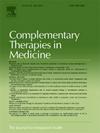付氏针刺对膝关节骨性关节炎患者疼痛和身体功能的影响:系统回顾和荟萃分析
IF 3.5
3区 医学
Q1 INTEGRATIVE & COMPLEMENTARY MEDICINE
引用次数: 0
摘要
目的通过荟萃分析,评价Fu’s皮下针刺(FSN)治疗膝骨关节炎(KOA)的疗效。方法检索截至2024年7月20日PubMed、Cochrane Library、Embase、Web of Science等数据库中FSN治疗KOA的随机对照试验(rct)。利用Stata 15.0进行数据分析。结果共纳入30项随机对照试验,共纳入受试者2169人。与电针、针刺和其他疗法相比,FSN在降低西安大略省和麦克马斯特大学关节炎指数评分(WOMAC,改善身体功能)[SMD= -1.69(-2.15至- 1.23),I²= 89.8 %,P <; 0.001]和缓解疼痛(视觉模拟量表)[SMD= -1.77(- 2.14至- 1.40);I²= 89.8 %,P <; 0.001]。此外,FSN更有效地降低炎症细胞因子水平,如白细胞介素1β [SMD = -1.65 (-2.36,- 0.94);²= 91.9 % P & lt; 0.001),白细胞介素- 6 (SMD = -3.93(-5.08−2.78);²= 96.7 % P & lt; 0.001)和肿瘤坏死因子-α(SMD = -2.65(-3.46−1.83);I²= 94.8 %,P <; 0.001],提高总有效率[OR = 4.17,95 % CI: 3.05-5.68;I²= 0.0 %,P <; 0.001]。结论sfsn有望作为KOA的辅助治疗,有中等质量的证据支持其在缓解疼痛和功能改善方面的短期疗效。需要通过标准化协议进行进一步验证,以确定其长期效益。本文章由计算机程序翻译,如有差异,请以英文原文为准。
Effectiveness of Fu's subcutaneous needling on pain and physical function in patients with knee osteoarthritis: A systematic review and meta-analysis
Objectives
This study aims to evaluate the efficacy of Fu's subcutaneous needling (FSN) for knee osteoarthritis (KOA) via a meta-analysis.
Methods
Randomized controlled trials (RCTs) of FSN for KOA were searched in PubMed, Cochrane Library, Embase, Web of Science, and other databases up to July 20, 2024. Stata 15.0 was leveraged for data analysis.
Results
30 RCTs were included, involving 2169 individuals. Compared to electroacupuncture, acupuncture, and other therapies, FSN demonstrated significant benefits in reducing the Western Ontario and McMaster Universities Arthritis Index score (WOMAC, improved physical function) [SMD= -1.69 (-2.15 to −1.23), I² = 89.8 %, P < 0.001] and relieving pain (the visual analog scale) [SMD = -1.77( −2.14 to −1.40); I² = 89.8 %, P < 0.001]. Additionally, FSN was more effective in reducing inflammatory cytokine levels, such as interleukin 1β [SMD = -1.65 (-2.36, −0.94); I² = 91.9 %, P < 0.001], interleukin-6 [SMD = -3.93 (-5.08, −2.78); I² = 96.7 %, P < 0.001], and tumor necrosis factor-α [SMD = -2.65 (-3.46, −1.83); I² = 94.8 %, P < 0.001], and increasing the total effective rate [OR = 4.17, 95 % CI: 3.05–5.68; I² = 0.0 %, P < 0.001].
Conclusions
FSN shows promise as an adjuvant therapy for KOA, with moderate-quality evidence supporting its short-term efficacy in pain relief and functional improvement. Further validation through standardized protocols is required to determine its long-term benefits.
求助全文
通过发布文献求助,成功后即可免费获取论文全文。
去求助
来源期刊

Complementary therapies in medicine
医学-全科医学与补充医学
CiteScore
8.60
自引率
2.80%
发文量
101
审稿时长
112 days
期刊介绍:
Complementary Therapies in Medicine is an international, peer-reviewed journal that has considerable appeal to anyone who seeks objective and critical information on complementary therapies or who wishes to deepen their understanding of these approaches. It will be of particular interest to healthcare practitioners including family practitioners, complementary therapists, nurses, and physiotherapists; to academics including social scientists and CAM researchers; to healthcare managers; and to patients. Complementary Therapies in Medicine aims to publish valid, relevant and rigorous research and serious discussion articles with the main purpose of improving healthcare.
 求助内容:
求助内容: 应助结果提醒方式:
应助结果提醒方式:


